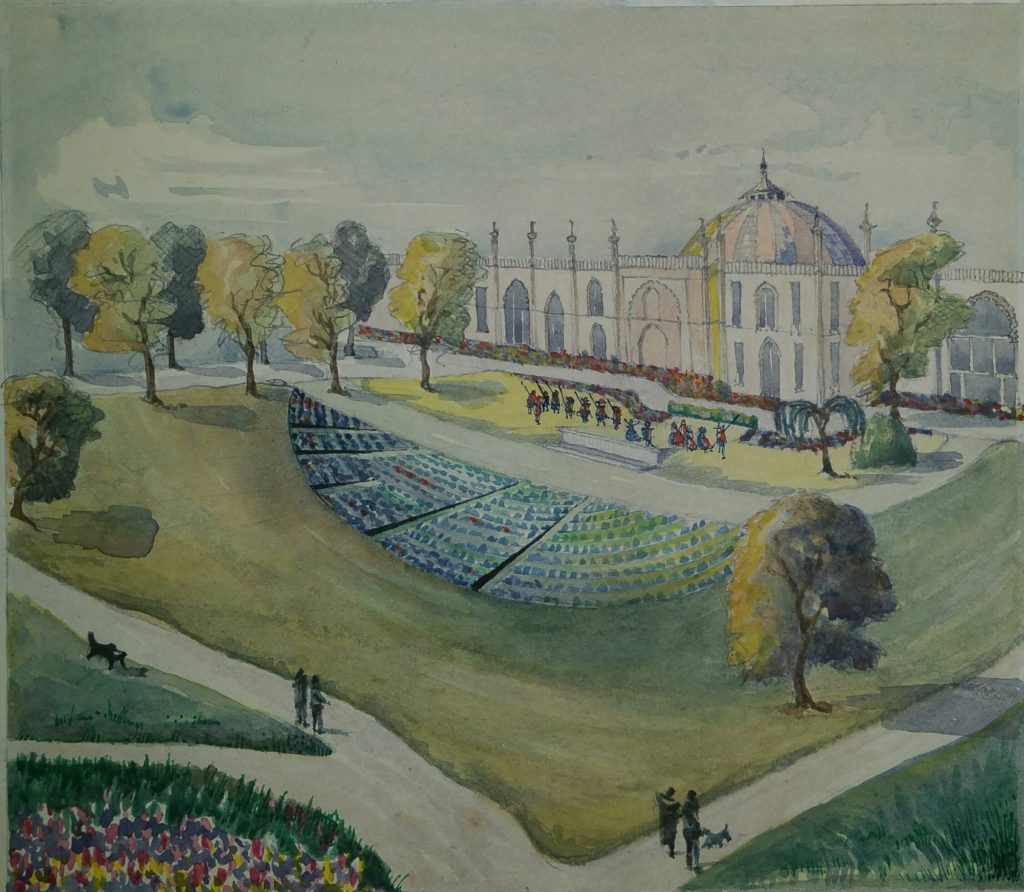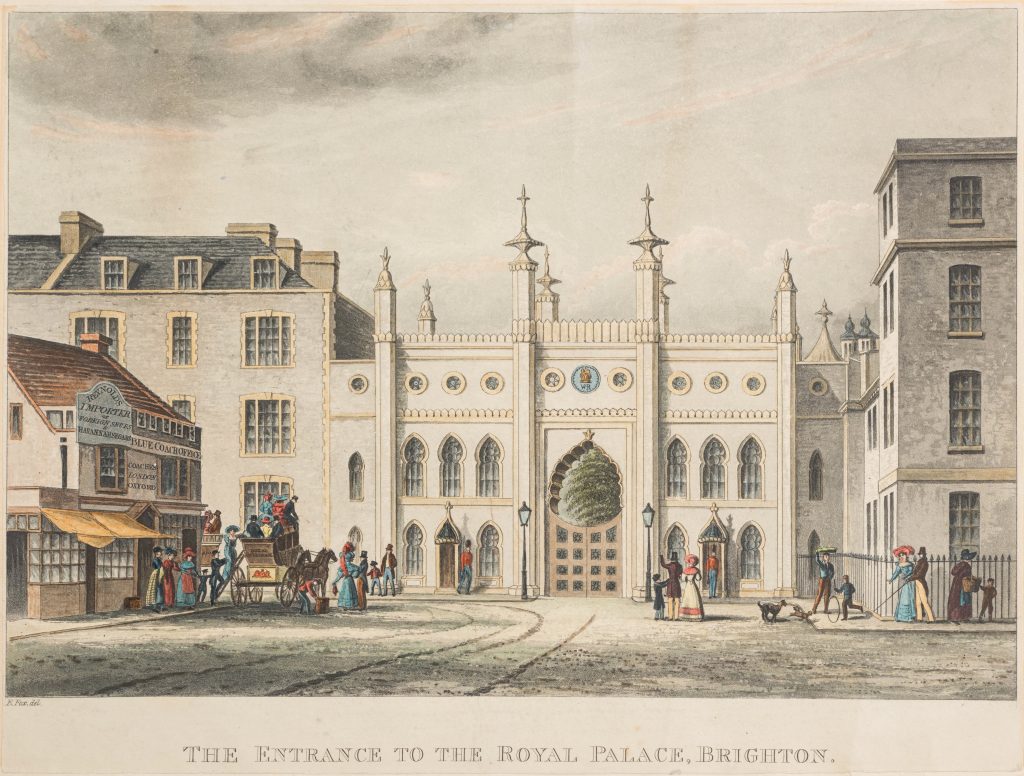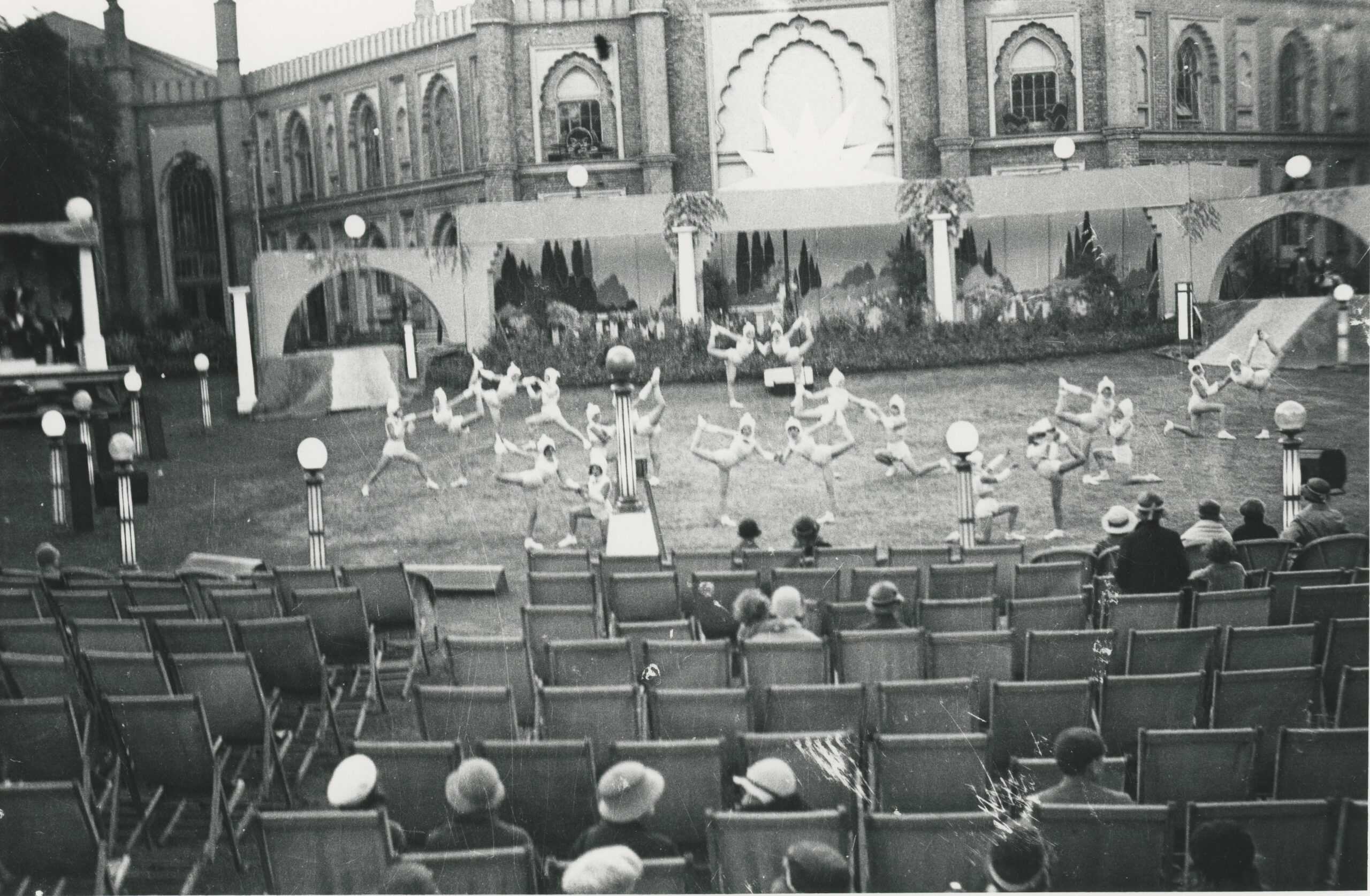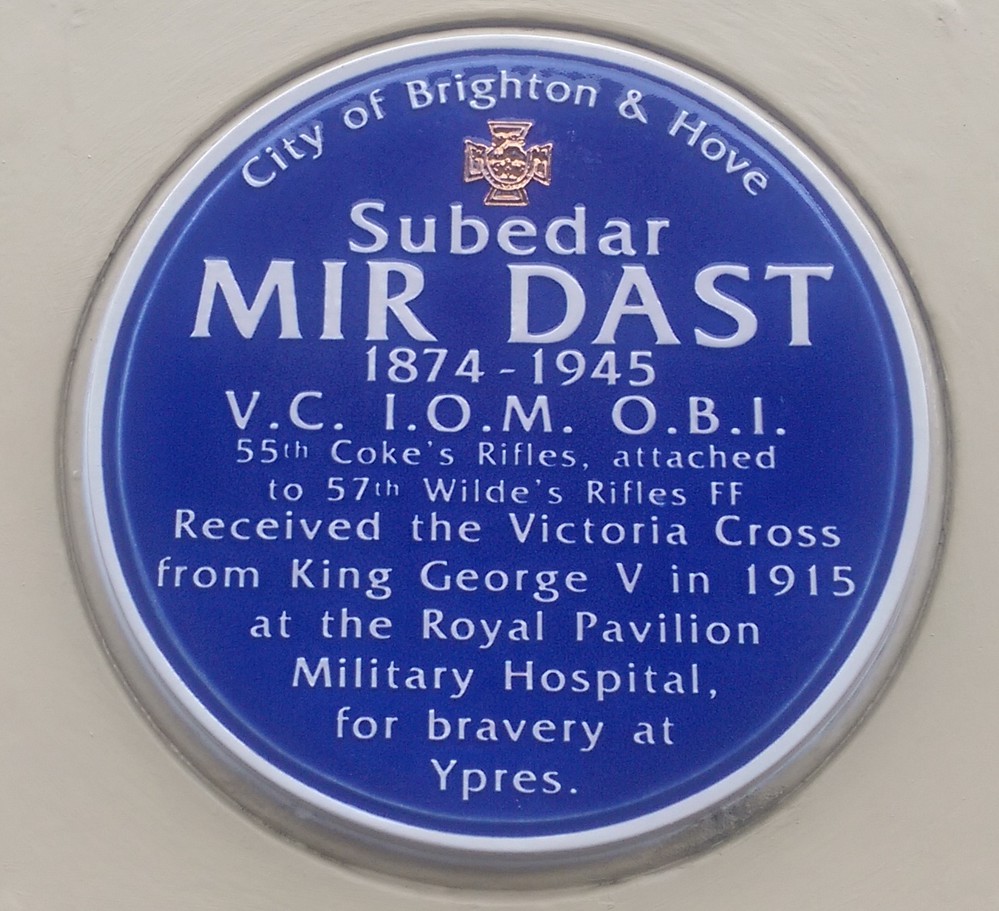
History of the Royal Pavilion Garden
Nestled within the heart of the city of Brighton & Hove is a very rare example of a royal pleasure pavilion, where the architecture and landscaped setting (our garden) survives intact. It was designed for the Prince Regent, later King George IV (1762-1830) in the early 19th century in the Picturesque style by the nationally significant and influential architect and landscape designer John Nash (1752-1835), with planting by the royal gardener William Aiton (1766-1849).
Today, the Royal Pavilion Garden is a much-loved small green open space in the centre of a busy city. At least 1.5 million people visit it every year. Other comparable landscape designs by John Nash are London sites and much larger: Buckingham Palace’s garden is 40 acres whilst St. James’s Park is 57 acres and Regent’s Park is 166 acres. The Pavilion Garden is miniscule in comparison – just 8 acres. This will influence how we need to go about restoring our tiny fragile space, balancing the unique and significant history, against the requirements of modern much used and loved city garden.
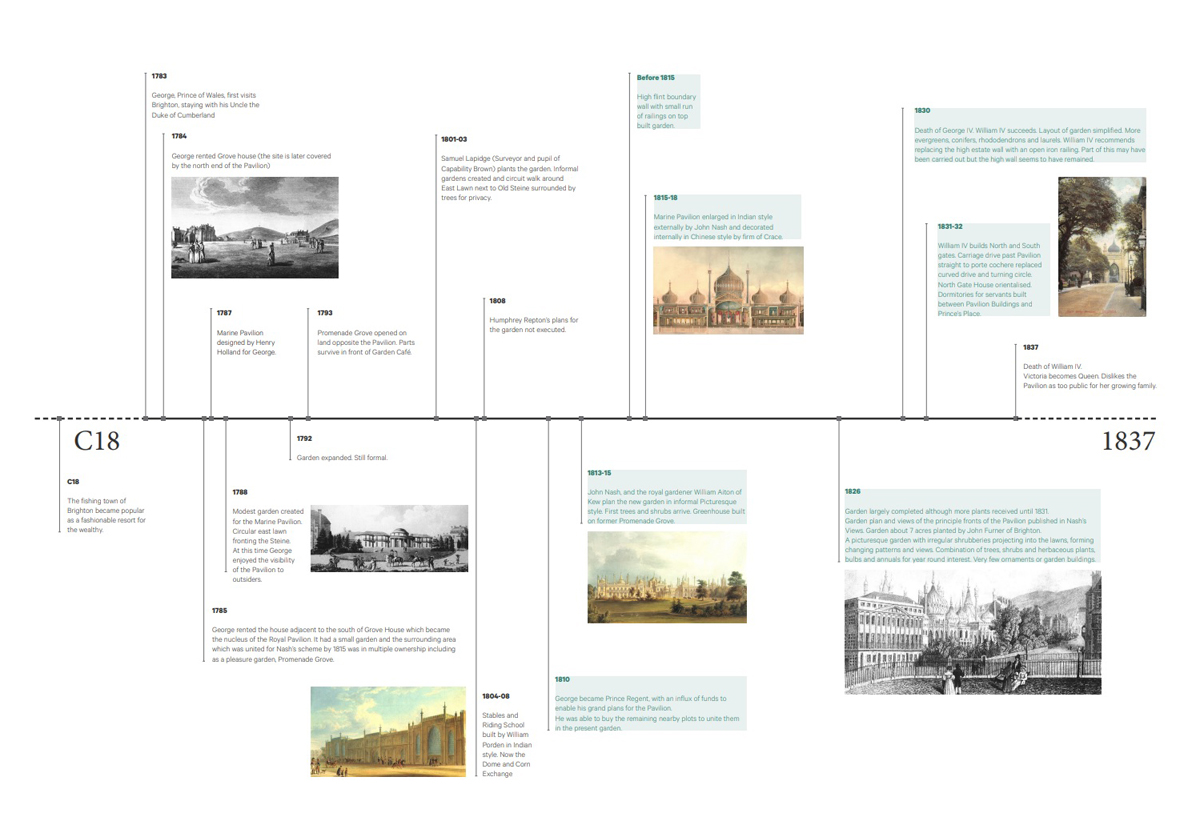

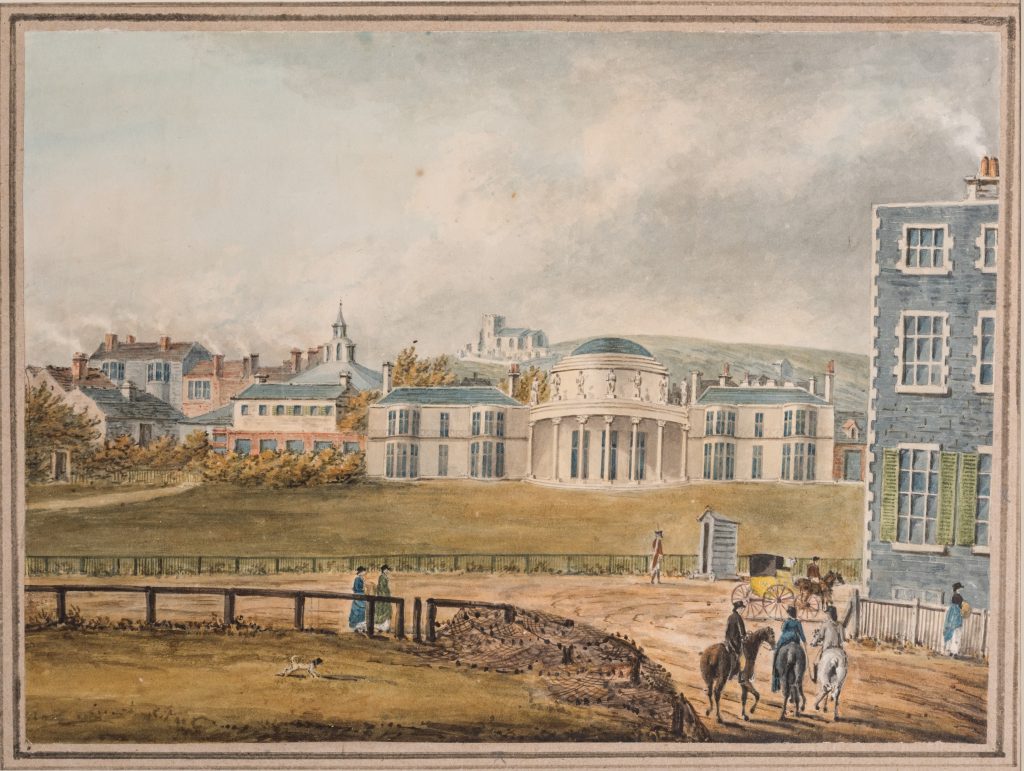
Two worlds colliding harmoniously: a 1797 watercolour of the Steine and Royal Pavilion

“Plenty of hidden doors and secret passages…” – The Royal Pavilion in a 1950s children’s book by Malcolm Saville


